Products You May Like
Looking for ways to save money on mountain biking? Whether you’re looking for cheap mountain biking kit or maintenance tips to help your bike running better for longer, we’ve got plenty tips and hacks to keep you going without spending lots.
The outdoors may be technically free, but mountain biking is becoming an increasingly expensive way to access it. With the cost of living rising in almost every area, we’re all looking at our outgoings and searching for ways to make savings, so we’ve put our collective heads together and come up with as many money saving tips as possible to help make riding your bike as fiscally efficient as possible.
And when mountain biking has so many physical and mental health benefits, it’s really something that you’re going to want to continue enjoying as part of your weekly routine.
We’ve divided it all up so you can jump quickly to the section you need, from maintenance tips to clothing and accessories savings.
Jump to: Money saving bike maintenance tips
Jump to: Money saving clothes and accessories tips
Jump to: Save money riding and getting to the trails
Jump to: Save money buying, upgrading (or by making it yourself)
Money saving bike maintenance tips

-
Become a home mechanic
Becoming your own mechanic is a brilliant way to save money and get to know your bike better. From simple tasks like changing tyres through to wheel building you’ll be surprised what you can do thanks to the wonders of YouTube videos, manufacturers’ support sections and pointers from friends.
Once you get stuck in you’ll be amazed at what’s doable with very few specialist tools and the feeling of accomplishment it gives will give you a warm glow.
2. Make your own bike tools
Some maintenance jobs require specialist tools, tools that will only ever be used for one particular job before being relegated to the bottom of the toolbox. Spending big on these kinds of tools can feel a bit of a waste of money.
But with a bit of lateral thinking you can adapt, improvise and overcome. A headset press can be put together with a piece of threaded bar, some washers and nuts. A chainwhip can be fashioned out of a bit of old chain and a pair of pliers and a tubeless tyre inflator can be lashed up with a coke bottle, a couple of old inner tubes and some tubing.
3. Buy the key bike maintenance tools

An on trail bodge to get you home is something to be proud of. A bodge job at home really isn’t. Despite the above tip, some tools really are worth buying – if you manage to damage the components you’re fixing by using a dodgy tool it’ll end up costing you more money than if you bought the correct tool in the first place.
If it’s a tool that you’re going to use regularly, like a brake bleeding kit, splash the cash. There are third party options out there that are much the same as the branded versions and they’ll save you having to darken your bike shop’s door with a broken bike and a red face – making them priceless.
5. Keep your drivetrain clean
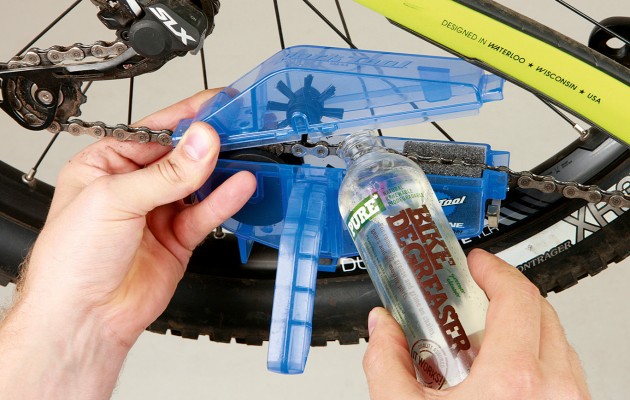
Probably the most important, and easiest, way to save money is to keep on top of maintenance, and the number one way of keeping your drivetrain running smoother for longer is to look after your chain.
Remove grit and grime from the chain with hot soapy water and an old toothbrush. Dry off the chain with a rag and a bit of WD40. Then apply a good quality chain lube. Let it soak in for a couple of minutes and then remove any excess with some kitchen roll. Do this after every ride and not only will your chain last longer but your expensive cassette and chainring will, too.
6. Service your suspension regularly

Regular suspension servicing is not something worth skimping on, it’ll save on expensive remedial work in the long term and ensure you’re getting maximum performance out of your forks and shock on every ride.
Keep fork, shock and dropper post clean and free of dirt, especially around the seals and stanchions. Apply a little bit of suspension fluid around the seals to help with lubrication and keep things moving smoothly.
If you’ve never serviced your air shock then give it a go – you’ll be surprised at how easy it is, and how little is in there! This also gives you a chance to make any set-up changes you’ve been thinking about. A lower-leg fork service is also pretty straightforward, and if you’ve not done one for a while you’ll be amazed at the difference it makes to the feel of your suspension.
Need instructions? Check your suspension manufacturer’s website or head on over to YouTube. Speaking of which…
7. Use YouTube for how-to maintenance advice
If the internet is the repository for all of human knowledge then YouTube is the place to go to make sense of it all. Mostly.
In between the UFO conspiracy theories and cat videos is everything you need to know to complete any task. Wheel building, brake bleeding, suspension servicing, gear indexing – there’s very little YouTube can’t help you fix. The truth is out there.
8. Join a community bike shop
Community bike shops or bike kitchens are starting to appear all over the country. Some have shared workshops that allow you to tinker with your bike and have access to tools you might not have at home. Others take bikes that have been donated, refurbish them and sell them on for a small profit – perfect if you’re after a basic mountain bike, maybe as a commuter or for riding over winter.
Many of them also offer specific guided session on how to fix particular things, like how to bleed brakes or replace gear cables. Not only will you be saving money you’ll be helping out a charity. Win win.
9. Run the same tyres front and back

Schwalbe Big Betty tyre
Some tyres are front or rear specific, others can be used in either position and some are designed for one wheel but work better on the other. Tyres can be confusing.
Make things simple and fit the same tyre to both wheels. When the rear tyre needs replacing, replace it with your front tyre and buy a new one for the front. Keep this going and you’ll maximise tyre life and have a consistent feel.
10. Change your travel, not your fork
Thanks to fork manufacturers needing to provide the same model of fork in a variety of travel options, changing the travel of your current fork to fit a new longer or shorter travel frame is, in most cases, pretty easy.
The exact process will change from brand to brand but in most cases all that’s required is a new air shaft, some oil and a bit of grease. With a new fork costing four figures, $/£50 for a new air shaft is a bargain.
11. True it yourself

Wheel building and truing are not the dark art they are often made out to be. In fact even the most ham fisted of home mechanics can get a wonky wheel straight again with not much more than a zip-tie and an inexpensive spoke key. Once you get a feel for it you’ll be lacing up your very own wheelset in no time.
12. E-bike battery care

Like any kind of battery, the one in your e-bike needs to be looked after correctly to last its expected lifetime.
A lot of this is done by the computer chips in the bike itself but there is plenty you can do too, from making sure that you don’t fully deplete the battery during riding, charging it at the optimum temperature and storing the battery with the right level of charge. Put a little work in, and you can make sure the battery lasts the distance long term and on every ride.
13. Join an owners group
Every brand has its own loyal following and with it comes a deep knowledge base, useful for helping solve problems without having to book into a dealer. Online forums have given way to Facebook Groups, and pretty much every brand is well catered for on that front.
These groups are often good places to lurk if you’re after advice on a particular bike, or specific component – chances are if you’ve got a problem someone else has had the same problem and found the answer.
14. Repair inner tubes

For those unconvinced by tubeless and still rocking inner tubes a puncture repair kit is essential and a tube can be kept alive almost indefinitely with the application of patches.
You can even put off having to buy a new tube by picking up all those discarded inner tubes by the side of the trail (seriously, who is dumping these? Stop it!) and spend a tip top evening with some tunes on, a bucket of water and the smell of vulcanising glue in your nostrils.
15. Ditch air canisters
Air canisters are quick, convenient and easy to stash in a pack or pocket. They are also expensive, have limited use and create waste. A pocket-sized pump may be more effort and slightly more bulky but it’ll work out cheaper in the long run, and will always be able to fill your tyres and reduce your recycling.

Scott and Giant Liv women’s e-bikes are both very capable all-rounders
Save money getting to the trails
Want to get out riding for less? There’s plenty of riding to be had while reducing your spend getting to the trails, staying at the trails, and riding better while you’re there.
-
Ride local
Sounds obvious really but riding from your doorstep is one of the easiest ways to save money. Not only do you save on petrol but you can save money by bypassing the café and pub and heading straight for your own fridge after the ride. Use Strava, Komoot or a decent Ordnance Survey or Benchmark map (Bing Maps has a great free online version) to look for trails and rights of way close to your house.
2. Take the train instead of driving
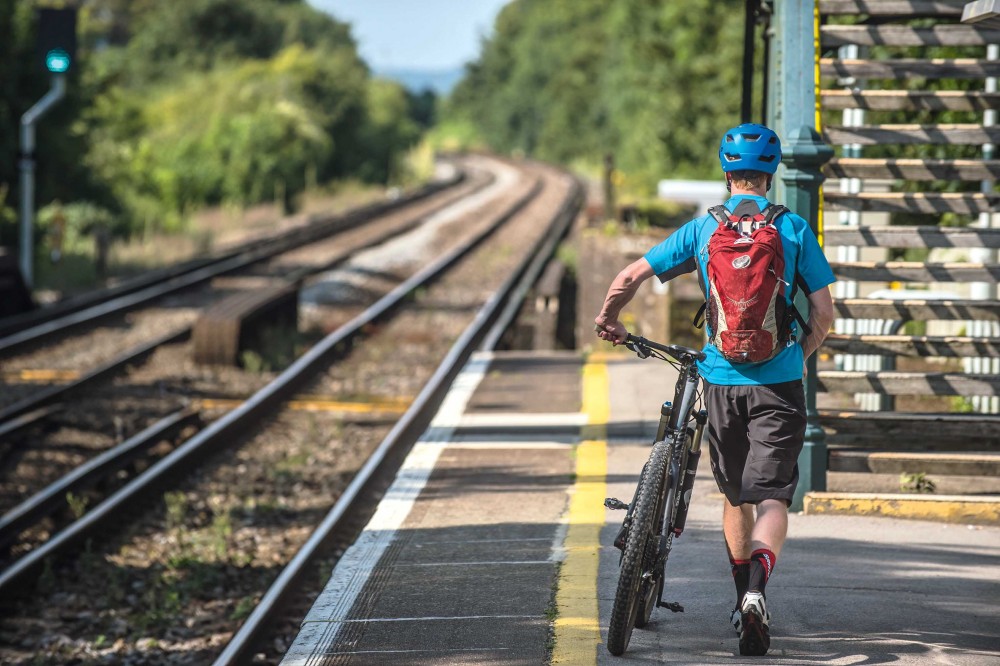
Bored of riding from home? Try exploring just a little further afield by letting the train take the strain for a stop or two. This should be far enough that you’re riding in relatively unknown territory but not so far that you can’t ride home. With a bit of planning this could open up a whole new riding area for the price of a single ticket.
3. Make your commute your ride
Ride your bike more and save money you say? Yes please. Commuting by bike sounds pretty worthy, but if you plan it as a ride and the destination just happens to be your place of work, then it sounds a lot more appealing. You don’t need to do it every day but it gives you something to look forward to during the daily grind and justifies that bike you got through the cycle to work scheme.
4. Share lifts to the trails
If you and your riding mates all drive to the trailhead separately, then that’s going to be costing you all more money. With a bit more organisation you can share the travel costs and save enough for an extra packet of pork scratchings in the pub after.
5. Make your car more aero and more efficient

Testing the best bike racks
Car manufacturers spend millions on vehicle aerodynamics to help improve fuel efficiency. Mountain bikers then stick a roof rack and a couple of bikes on top, creating huge amounts of drag and putting a large dent in mpg figures.
A towbar mounted rack is better and, although it may not be as convenient, putting your bike in the car rather than on it will make a real difference to fuel consumption. You’ll want to get yourself a big tarp to stop oil getting on your upholstery.
6. Choose hostels and camping over hotels and B&Bs
Even budget hotels and B&B’s are expensive compared to booking into a hostel or campsite.
If you’re in the UK, the Youth Hostel Association (YHA) is a good option. YHAs can be found in most places there’s decent riding, are used to outdoorsy types, so they won’t mind you rocking up covered in mud and will have somewhere safe to stash your bike… some even have on-site workstands and tools.
If there’s a bunch of you a bunk room will bring overnight accommodation costs way down but even a private room is pretty cheap – plus, you’ll be supporting a great charity.
There are also plenty of independent hostels globally, and a number of hostels around the world are part of Hostelling International.
7. Set up a budget home gym

Gym membership can be expensive, and if you’re not using specialist equipment there are plenty of exercises that can be done at home for free using household items or just your own body weight. There are also plenty of free online classes and articles, on everything from turning your living room into a home gym to exercise programmes to follow.
8. Get stretching, stay fit
Injuries suck, and on top of the time and discomfort, rehabilitation can be costly as physiotherapist and other treatment can add up. And while a crash might be hard to avoid, the wear and tear on your body and the injuries that can it cause can be.
As with your bike, a good physical maintenance regime will keep you riding for longer and help avoid time off work and visits to the doctor or physio.
Basic stretching after rides can help you avoid feeling stiff and uncomfortable the next day and a bit of yoga can go a long way in keeping you in fine fettle.
9. Learn to ride smoother

Manualling off fast drops will keep your front end high and mean that both of your wheels can come down smoothly at the same time
It’s a truism but if you don’t break it, then it won’t need fixing. With most breakages being caused by rider error rather than some kind of mechanical failure it pays, or in this case saves, to ride smoothly. Improving your bunny-hopping, braking and even gear shifting can help reduce wear, tear and destruction of your bike.

Save money on clothes and accessories
There are lots of ways you can save money on your mountain biking clothes and accessories, from shopping in the sales to repairing and reusing the kit you’ve got. The more you look after something and the longer you wear it, the better value for money it is.
And of course there’s always the option of new-to-you clothes through second-hand sales and clothes swaps.
-
Work glasses as eye protection
Fancy sunglasses and mountain biking don’t really mix, especially in winter where grit and trail debris scratch lenses, no matter how tough they are. Keep your fancy shades for apres-ride posing and pick up some eyewear protection from a home-improvement store.
Screwfix have Bolle specs with smoked lenses for £11 and these DeWalts have more than a whiff of Oakley about them for just £23.
2. Buy pre-loved or second-hand
There are bargains to be found in various places if you don’t mind a pre-loved or second-hand item.
Online, look at places like Facebook Marketplace and Gumtree, and in particular if there are online mountain bike selling groups which may be a great place to start. Don’t forget to pay attention to the terms and conditions, and be careful when transferring money.
You can also look out for used kit sales. These are often run by trail volunteer groups and other organisations who are looking to raise money – you can also donate your old kit here if you want to help a good cause.
3. Sell, swap or donate spare kit
How many mountain bike jerseys, shorts, shoes or jackets do you have lurking in your kit cupboard, and how many do you actually wear? Ask yourself honestly!
If you find you’ve got a whole bundle of kit that’s taking up room and not getting used, why not either sell it, swap it or donate it?
Facebook Marketplace, Gumtree, eBay and online forums are all good places to sell your kit and get some cash back in return. You could also arrange a clothes swap with your mates, or maybe a bigger one at your local trail centre.
Or finally, as we’ve mentioned above, you could opt to donate it instead to your local mountain bike trail crew if they’re looking to raise money; it’s a great way to support the people who look after your trails if you can’t spare time or money.
4. Reproof waterproofs

If your waterproof jacket isn’t actually waterproof anymore it likely needs reproofing. This is easy to do at home with a few specialist treatments and a washing machine.
Check to see if water beads on your jacket. If it doesn’t then it probably needs its DWR coating renewed. This layer is what prevents the material underneath becoming saturated, at which point it stops breathing and you get wet.
Granger’s 2-in-1 Cleaner and Proofer does what it says on the bottle, safely cleaning your jacket and restoring the DWR coating.
To use, make sure all zips and Velcro flaps are closed and use the 2-in-1 as you would a normal detergent, washing on a warm wash with a rinse cycle. To finish, tumble dry the jacket on a medium heat until it’s dry.
5. Repair and resole your shoes
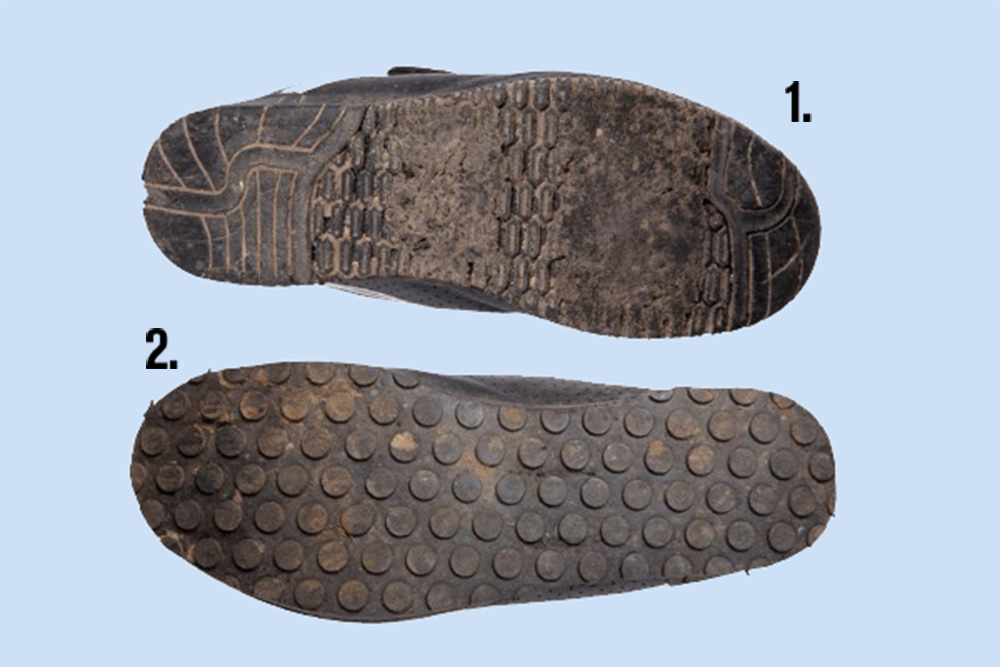
Mountain bike shoes have a hard life. Ratchets can get bashed off, soles come unstuck and laces snap. With a fresh pair of riding kicks costing more than you’d probably spend on day-to-day trainers, it pays to prolong their life as much as possible.
Most ratchets are replaceable and there are various brands of glue designed to stick rubber back together again. And, if you like the idea of waterproof shoes for winter but can’t stretch to the latest GoreTex wonders, a pair of waterproof socks will do the same job for much less.
6. Learn to sew
A simple needle and thread can be enough to extend the life of everything from shorts to knee pads. Waterproof jackets can also be patched up with specialist ‘plasters’ to keep them working as intended.
7. Use clothing repair services

Re-seaming is a regular job for repair companies
Brands like Endura have their own in-house repair service, which is very reasonably priced. Patagonia and Alpkit also have workshops and repair events where you can bring along your clothing – or send it off – and have it fixed for a nominal cost.
In the UK, Scottish Mountain Gear and Lancashire Sports Repairs and both specialise in outdoor clothing but they also do bike gear and offer re-proofing, seam re-sealing, hole repairs and even full zip replacements.
8. Choose multi-use clothing
When it comes to buying new clothing, look for garments that will do for other activities. Just because it’s not mountain bike specific doesn’t mean it’s not up to the job. If you’re into other outdoor sports having one expensive jacket, for instance, that can do it all is easier to justify than one for each activity.
9. Choose non-MTB branded clothing

Logos cost money. If you’re willing to forgo the cachet of a well-known brand, general outdoor retailers offer a range of own-brand technical clothing that deliver similar levels of function, if not fashion.
The middle aisle of certain supermarkets often have cycling gear which, although not always the most stylish, is more than up to the job. Thankfully these garments are also low on branding and at the price they sell for you really won’t care what logo you’re wearing.
That said, we’d also advise against getting into the mountain bike equivalent of fast fashion; if you can afford it, it’s better to buy one pricier garment that will last longer and work better than lots of cheap ones.

Save money buying, upgrading, or by making it yourself
Whether you’re in the market for a whole new bike, need to upgrade parts or are shopping for maintenance bits and pieces, we’ve got a whole load of advice on how to find bargains and save money.
-
Buy pre-loved
The pre-loved bike gear market is a bit of a mixed bag at the moment. On the one hand prices are higher than ever for good quality used gear, but on the other a lot of the bikes that were bought over lockdown and then parked up in garages are now being moved on, meaning there are still bargains to be had.
A daily trawl through the likes of Facebook Marketplace is the best bet to find bikes locally. As ever when buying a used bike, ask plenty of questions, give it a good check over and make sure it’s not stolen.
2. Sell and swap

Spares box
Mountain bikers are natural hoarders. But where there’s muck (or just mildly dirty components) there’s brass. If there are parts taking up space in the shed, get them sold. Facebook Marketplace, Gumtree, eBay and online forums are all good places to convert your stash into cash.
Alternatively see if anyone is up for a trade. Got an old road bike but fancy a jump bike? There may be someone looking to move the other way.
3. Rejuvenate your bike frame with a refurb
Ease the new-bike cravings and boost the resale value of your bike by refurbishing your frame. There are plenty of places that can powder coat a frame to get it looking fresh again but it’s worth asking around for places used to dealing with mountain bikes. Obviously this only applies to frames made of metal as the heat treatment used in powder coating does bad things to carbon so don’t try it.
Brands like Orange offer their own in-house refurb service where they give your well-loved frame a respray, fresh graphics and replace the bearings.
4. Buy once, buy right
Everyone loves a bargain, but it’s only a bargain if you really want it. If the object of your desires is currently beyond your means then save for it. Buying a close approximation may mean you don’t have to wait but if it’s not what you really want and you’re honestly not going to be really happy with it, it’s better to wait and save, rather than spending your money.
5. Opt for quality as well as considering price

There are places to save money and places to spend money. For the most part a cheap stem will work just as well as an expensive one, but buying a set of bargain price, no-name wheels from eBay, for example, is only actually a bargain if they are fit for purpose. If you have to replace the rims and bearings after just a few rides you’ve not actually saved any money at all.
So for some items, it’s worth spending a bit more. It’ll perform better, last longer, and ultimately provides good value for money – the longer you use it, the lower the cost per mile!
6. Give your bike new geometry with some simple upgrades
Mountain bike geometry is always progressing. But while the whole longer, lower, slacker thing is definitely happening, with a few notable exceptions, it’s happening incrementally.
If you’re looking to upgrade your just-out-of-warranty frame for something with more contemporary geometry, fitting some offset bushings and an angle adjust headset could help get you close to more modern numbers for little cost – just watch out for shock clearance issues!
7. Go heavy duty with your components
Keith Bontrager’s mantra of ‘strong, light, cheap; pick two’ still applies to mountain bike components. And if it’s a choice we’ll go for strong and cheap, please.
It’s easy to get obsessed with your bike’s weight, but for most of us adding a couple of grams here and there will barely register during a ride.
What will definitely be noticeable is that parts last longer. For example, when it comes to replacing your chainring choosing a steel one over an alloy equivalent will cost you less and it’ll last a whole lot longer. If you can tell the difference the extra weight makes to the feel of the bike then you probably need to come and work for us.
8. Downgrade rather than upgrade
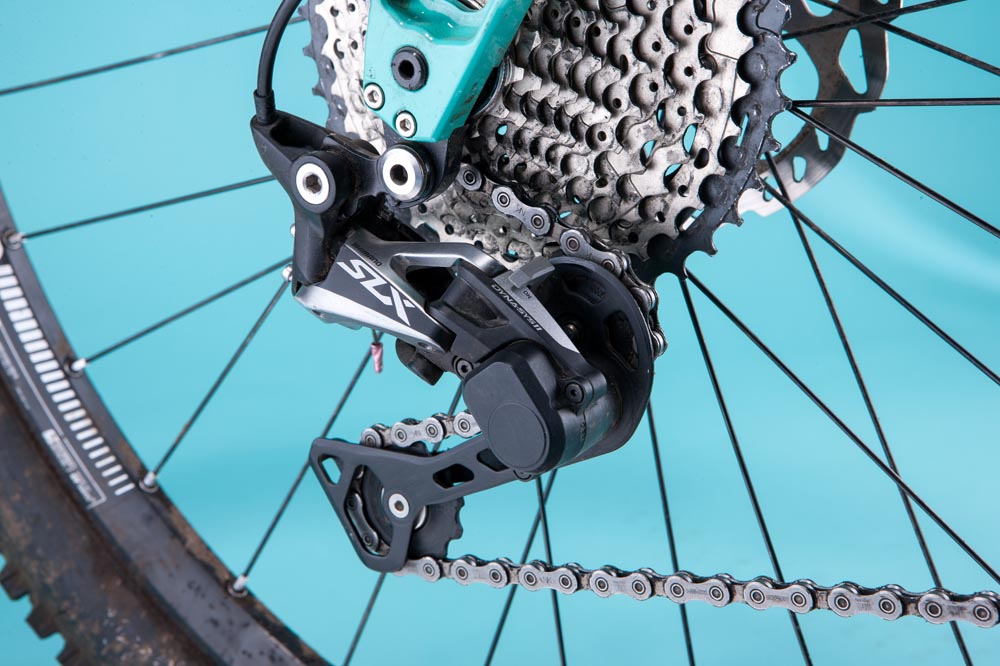
Shimano SLX M7000
You’ve smashed your lovely Shimano XTR rear mech off a rock and it’s now not even fit as a desk ornament. Rather than handing over the $/£215 needed for a direct replacement, think about downgrading.
If you’ve been swanning about with top of the range gear for a while you’re probably not aware at how good lower end stuff is now. SLX may be carrying a few extra grams over XTR but performs almost as well but with a hefty £130 saving. And don’t worry, no-ones judging you based on your rear mech.
9. Sign up to newsletters and search alerts for offers and sales
Bagging a bargain is all about being first. It’s the 21st century version of hunting. Save time hunting about for savings and let them come to you. Sign up to newsletters with bike brands and retailers and be the first to know about sales, savings, offers and clearances. No one wants junk mail taking over their inbox, so set up an email account specifically for bike related emails.
Similarly set up search alerts on eBay and Gumtree for things you’re interested in to save you trawling listings on a daily basis and potentially missing out.
10. No suspension = less cost and less maintenance
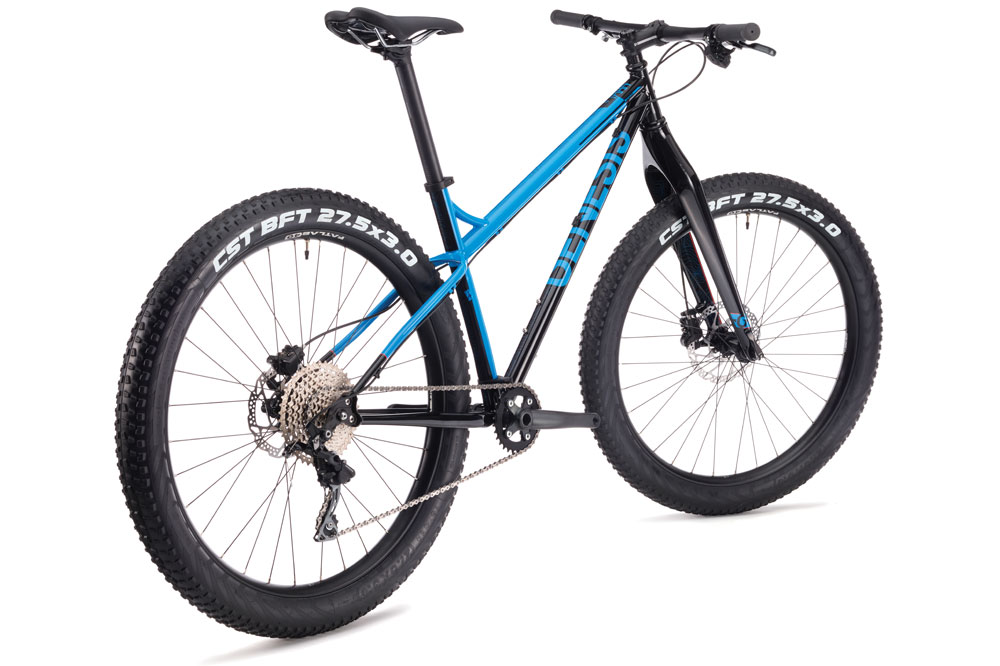
The logical conclusion to reducing bike maintenance – without stopping riding completely – is to ride a rigid hardtail. In winter this can make a lot of sense, and with no suspension to service or worry about you can happily plough through muck knowing your expensive bouncy bits are out of harm’s way at home.
Want to go simpler still? Shun the gears and run it single speed. Your legs may not thank you initially, but when you get back on your fully sprung bike with all 12 gears you’ll have a new-found strength and smoothness.
11. Make if yourself
Get crafty and creative with household items to pimp your ride. Building your own rear mech from coat hangers is probably asking a bit much but a front mudguard can be fashioned out of a large, plastic milk bottle pretty easily. An old innertube can be strung between saddle rails and frame to keep muck off your dropper post.
Send us a photo of your finest creation on social media and we’ll share it with the world. You should probably patent it first though.
12. Homemade energy products

Homemade energy bar
If you’re happy to swap scientific precision for ready reckoning when it comes to energy products there are some savings to be had. Homemade energy bars and even gels also give you the chance to cater to your personal tastes.
13. Make it yourself hand cleaner
After a bit of spanner juggling there’s nothing like the feeling of Swarfega with gritty bits in it to clean the muck off your hands and make you feel like you’ve completed a job properly. Try putting salt in regular hand soap for a similar exfoliating effect.
14. Buy generic rather than branded
For reasons of profit and legal protection manufacturers will only ever recommend their own replacement parts, but in many cases these are generic and can be picked up cheaper elsewhere.
For example, DOT fluid – as used in SRAM and Hope brakes – is available from any motor factor. What matters is getting the correct specification, not what kind of vehicle appears on the bottle.
It’s a similar story with bearings, which are available from online suppliers for a lot less than brands charge. As long as the numbers on the bearings are the same there’s no reason they won’t work.
15. Bulk buy where you can

Buying regularly used products like bike cleaner, chain oil and tubeless sealant in bulk often nets you a decent saving. Of course you then have to store the stuff, but if you chip in with a couple of mates and then divvy it up afterwards you all get to take advantage of the discount.
16. Save through spending
So you want that new-bike feel with plush suspension but can’t stretch to a whole new bike? While still pricy, buying a new component – even if it’s an expensive or top-end one, like a shock – is still cheaper than buying a whole bike and can make your existing bike feel like new.
So while it does cost money, it’s improving what you have, saving you money on the cost of a new bike, and reducing waste to a degree.
17. Subscribe and save with MBR
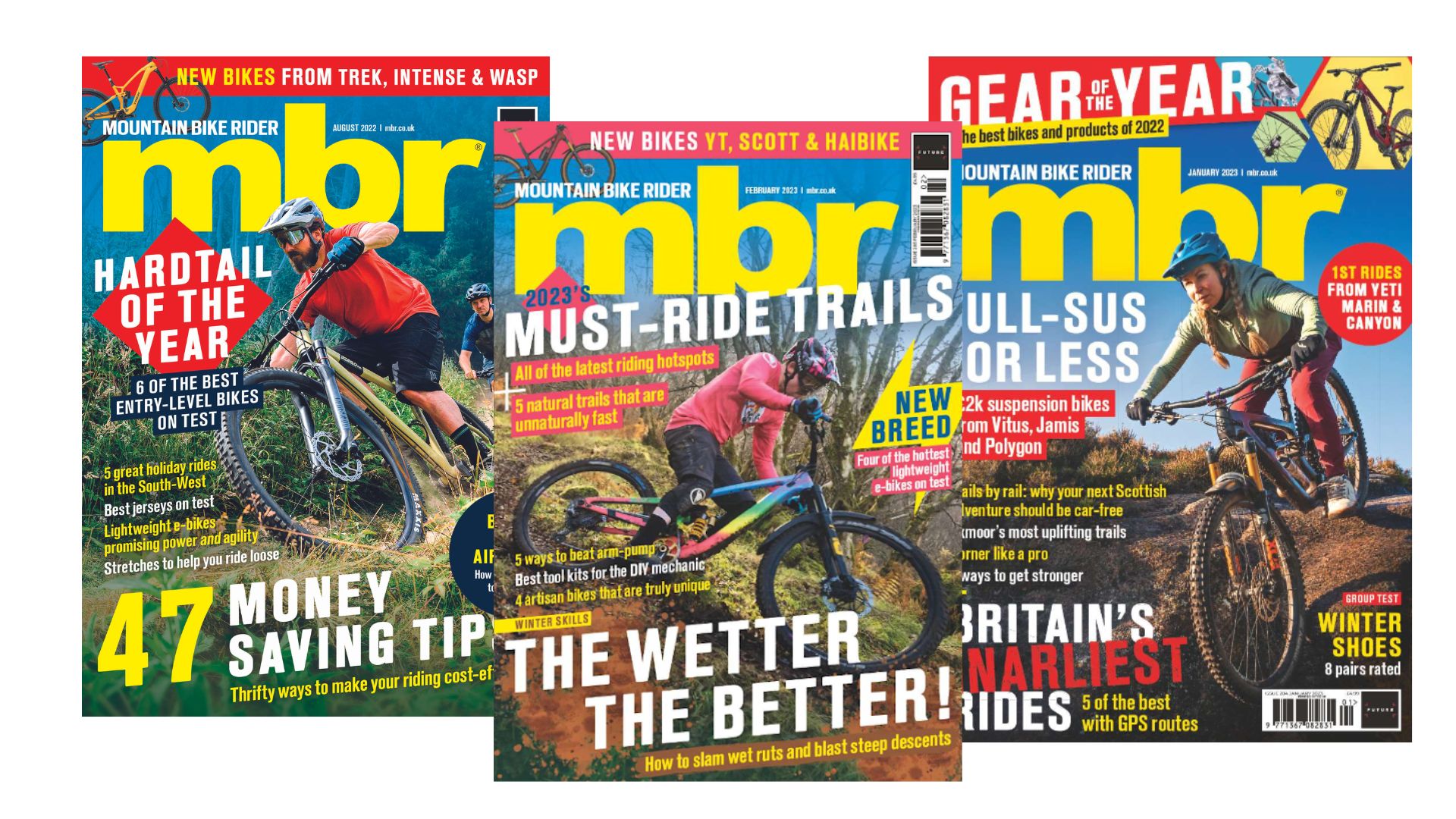
Well, we had to get this one in here didn’t we? But in all seriousness subscribing to MBR will save you money on each issue, stopping you spending money on chocolate and pop in the newsagents and help make sure your money goes on the best performing products.
Plus, we give you amazing financial advice!
Quality and price are two major factors when it comes to deciding what bikes and parts to get, and the good news is that there is plenty of great kit out there that don’t require you to empty your bank account.
We’ve collected some of the best budget mountain bike kit into helpful buyer’s guides so you know what to look for, what we’ve tested and rated, and where to get it.

